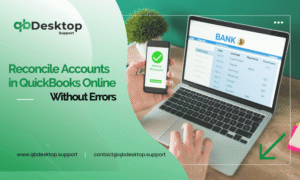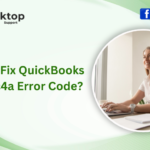Integrating QuickBooks Desktop with Google Sheets can provide immense benefits for businesses looking to streamline their accounting processes and improve their financial data management. This comprehensive guide covers various aspects of integrating these two powerful tools, including setup, benefits, use cases, and troubleshooting.
Benefits of Integrating QuickBooks Desktop with Google Sheets
Integrating QuickBooks Desktop with Google Sheets offers several advantages, including:
- Real-Time Data Syncing: Ensure your financial data is always up-to-date across both platforms.
- Enhanced Data Analysis: Utilize Google Sheets’ powerful data analysis and visualization tools to gain deeper insights into your financial data.
- Improved Collaboration: Share financial reports and data easily with team members and stakeholders.
- Automated Workflows: Reduce manual data entry and minimize errors by automating data transfer between QuickBooks Desktop and Google Sheets.
- Cost Savings: Leverage Google Sheets’ free features to complement your QuickBooks Desktop functionalities.
Methods of Integration
Using Third-Party Tools
Several third-party tools can facilitate the integration of QuickBooks Desktop with Google Sheets. These tools often provide user-friendly interfaces and seamless data syncing capabilities. Some popular third-party tools include:
- Zapier: An automation tool that connects various apps and automates workflows.
- Coupler.io: A data integration tool specifically designed for transferring data between apps.
- CData: Provides ODBC drivers to connect QuickBooks Desktop with Google Sheets.
Manual Data Export and Import
For those who prefer a more hands-on approach, manually exporting data from QuickBooks Desktop and importing it into Google Sheets is an option. This method is suitable for periodic data transfers and for those who do not require real-time syncing.
Using APIs
For advanced users with programming knowledge, integrating QuickBooks Desktop with Google Sheets via APIs (Application Programming Interfaces) can provide a highly customizable solution. Intuit offers a QuickBooks API, and Google Sheets can be accessed via Google Sheets API.
Steps for QuickBooks Desktop Google Sheets Integration
Setting Up QuickBooks Desktop
Before integrating QuickBooks Desktop with Google Sheets, ensure that QuickBooks Desktop is properly set up and that your financial data is accurate and up-to-date.
- Install QuickBooks Desktop: Ensure you have the latest version installed.
- Set Up Your Company File: Create or open your company file and configure your accounts, customers, vendors, and items.
- Enable API Access: If you plan to use API integration, ensure API access is enabled in your QuickBooks Desktop settings.
Preparing Google Sheets
- Create a Google Account: If you do not already have one, create a Google account.
- Access Google Sheets: Open Google Sheets through your Google account.
- Set Up a New Spreadsheet: Create a new spreadsheet where you will import your QuickBooks data.
Using Third-Party Tools for Integration
Example: Zapier
- Sign Up for Zapier: Create an account on Zapier.com.
- Connect QuickBooks Desktop: In Zapier, connect your QuickBooks Desktop account.
- Connect Google Sheets: Similarly, connect your Google Sheets account.
- Create a Zap: Set up a Zap (automated workflow) to transfer data from QuickBooks Desktop to Google Sheets. Define triggers and actions, such as transferring new invoices to a Google Sheets spreadsheet.
Example: Coupler.io
- Sign Up for Coupler.io: Create an account on Coupler.io.
- Connect QuickBooks Desktop: Follow the instructions to connect your QuickBooks Desktop account.
- Connect Google Sheets: Connect your Google Sheets account.
- Configure Data Transfer: Set up data transfer schedules and mappings between QuickBooks Desktop and Google Sheets.
Manual Data Export and Import
- Export Data from QuickBooks Desktop:
- Open QuickBooks Desktop and navigate to the report or data you wish to export.
- Export the data as a CSV file.
- Import Data into Google Sheets:
- Open Google Sheets and create a new spreadsheet.
- Go to File > Import and upload the CSV file.
- Map the data to the appropriate columns in Google Sheets.
API Integration
Example: Using QuickBooks API and Google Sheets API
- Set Up QuickBooks API:
- Sign up for Intuit Developer account.
- Create an app and obtain API keys.
- Configure OAuth for authentication.
- Set Up Google Sheets API:
- Enable Google Sheets API in Google Cloud Console.
- Obtain API keys and set up OAuth for authentication.
- Write Integration Code:
- Use programming languages such as Python, JavaScript, or Node.js.
- Write code to authenticate with both APIs and transfer data between QuickBooks Desktop and Google Sheets.
- Schedule regular data transfers using cron jobs or similar scheduling tools.
Common Use Cases
Financial Reporting
One of the most common use cases for integrating QuickBooks Desktop with Google Sheets is financial reporting. By syncing financial data, businesses can create customized reports and dashboards in Google Sheets. This allows for real-time tracking of key financial metrics, such as revenue, expenses, and profit margins.
Steps:
- Set up a Google Sheets template for your financial reports.
- Use third-party tools or APIs to transfer financial data from QuickBooks Desktop to Google Sheets.
- Use Google Sheets functions to calculate metrics and create charts and graphs.
Budgeting and Forecasting
Integrating QuickBooks Desktop with Google Sheets can streamline the budgeting and forecasting process. By transferring historical financial data to Google Sheets, businesses can create detailed budgets and forecasts, track actual performance against budgeted figures, and make data-driven financial decisions.
Steps:
- Export historical financial data from QuickBooks Desktop.
- Import the data into Google Sheets.
- Use Google Sheets to create budget templates and forecasting models.
- Regularly update the data to track performance.
Inventory Management
For businesses with inventory, integrating QuickBooks Desktop with Google Sheets can help manage stock levels, track inventory turnover, and optimize reorder points. Google Sheets can serve as an inventory management tool, providing real-time visibility into inventory levels.
Steps:
- Export inventory data from QuickBooks Desktop.
- Import the data into Google Sheets.
- Use Google Sheets functions to calculate inventory metrics and set up alerts for low stock levels.
- Regularly update the data to maintain accuracy.
Payroll Management
Integrating QuickBooks Desktop with Google Sheets can simplify payroll management by automating the transfer of payroll data. This integration can help businesses track payroll expenses, manage employee records, and generate payroll reports.
Steps:
- Export payroll data from QuickBooks Desktop.
- Import the data into Google Sheets.
- Use Google Sheets to create payroll reports and track payroll expenses.
- Regularly update the data to ensure accuracy.
Troubleshooting Common Issues
When integrating QuickBooks Desktop with Google Sheets, you may encounter some common issues. Here are a few troubleshooting tips:
- Authentication Errors: Ensure that API keys and OAuth credentials are correctly set up and have the necessary permissions.
- Data Mismatches: Verify that data mappings between QuickBooks Desktop and Google Sheets are correct. Ensure that data types and formats are compatible.
- Syncing Delays: Check the frequency of data transfers and adjust scheduling settings as needed. Ensure that both QuickBooks Desktop and Google Sheets have stable internet connections.
- Third-Party Tool Limitations: Review the limitations and capabilities of the third-party tools you are using. Consider upgrading to premium plans if necessary.
Best Practices for Integration
To ensure a smooth and efficient integration between QuickBooks Desktop and Google Sheets, consider the following best practices:
- Regularly Back Up Data: Before performing any data transfers, back up your QuickBooks Desktop data to prevent data loss.
- Test Integration: Perform test data transfers to identify and resolve any issues before going live.
- Monitor Data Transfers: Regularly check the accuracy of transferred data and address any discrepancies promptly.
- Maintain Data Security: Ensure that sensitive financial data is encrypted and protected during transfers. Use secure connections and follow best practices for data security.
- Stay Updated: Keep both QuickBooks Desktop and Google Sheets, as well as any third-party tools, updated to the latest versions to benefit from new features and security enhancements.
Conclusion
Integrating QuickBooks Desktop with Google Sheets can significantly enhance your business’s financial data management capabilities. By leveraging the strengths of both platforms, you can improve data accuracy, streamline workflows, and gain valuable insights into your financial performance. Whether you choose to use third-party tools, manual data transfers, or API integration, this guide provides the information you need to get started and achieve a successful integration.
For any further assistance or inquiries, please feel free to contact our support team at +1-855-838-5977.
Frequently Asked Questions
Yes, QuickBooks can integrate with Google services, such as Google Sheets and Google Drive. This integration allows users to sync financial data, streamline data management, and enhance collaboration. You can use third-party tools like Zapier, Coupler.io, or APIs to facilitate this integration.
While QuickBooks Online does not support direct import from Google Sheets, you can export your Google Sheets data to a CSV file and then import the CSV file into QuickBooks Online. This method allows you to transfer your data into QuickBooks Online accurately.
Yes, QuickBooks Desktop provides an API that allows developers to integrate third-party applications with QuickBooks Desktop. The QuickBooks Desktop API enables you to automate tasks, synchronize data, and create custom solutions tailored to your business needs.
Yes, you can remote into QuickBooks Desktop using various remote access solutions. Tools like QuickBooks Remote Access, LogMeIn, and TeamViewer allow you to access QuickBooks Desktop from a different location, providing flexibility and convenience for managing your accounting tasks remotely.
QuickBooks Online and QuickBooks Desktop are separate products and do not directly sync with each other. However, you can migrate data between the two platforms using the QuickBooks data conversion tool or by exporting and importing data files. It’s important to choose the version that best fits your business needs.
Yes, multiple users can access QuickBooks Desktop simultaneously by using a multi-user mode. To enable this, you need to set up QuickBooks Desktop on a network and configure the company file for multi-user access. Each user must have a licensed copy of QuickBooks Desktop and the appropriate permissions to access the company file concurrently.








